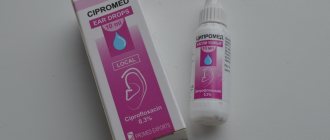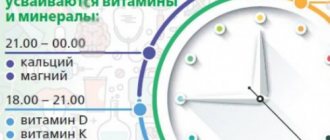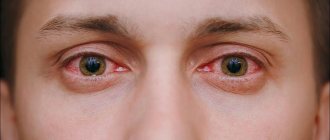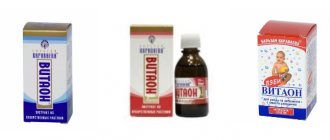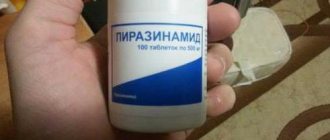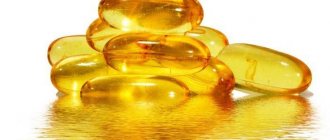Ammonia-anise drops are a combined medicine that contains substances with different physicochemical properties. The drug is mainly used for bronchitis accompanied by a productive or non-productive cough. With a wet cough, the medicine helps remove liquid secretions from the bronchi, and with a dry cough, it promotes the formation of sputum, and with a debilitating cough, it relieves chest pain and heals the mucous membranes.
Compound
This is a medicine with a combined composition, the main active ingredients of which are essential anise oil and a 10% ammonia solution. Thanks to these components, the drug has a double effect.
| Active substances | Excipients | |
| Essential anise oil | Ammonia | Ethanol |
| 2.81 g | 15 ml | About 100 ml |
The oil is a natural antiseptic, as it contains phenolic compounds and carboxylic acids. When taken orally, the ether activates bronchial secretions and stimulates the process of mucus evacuation from the respiratory tract.
Ammonia makes sputum more viscous, making it easier to expectorate. It affects both the ciliated epithelium of the bronchi and the nerve endings, causing a reflex reaction of the body that promotes coughing up sputum.
Pharmacological properties
The combined drug with anise has expectorant properties due to the anti-inflammatory effect and reducing the viscosity of bronchial secretions. Under the influence of the main ingredients, patients experience an improvement in the evacuation of mucous secretions accumulated in the tracheobronchial region.
An ammonia solution accelerates the liquefaction of thick sputum by breaking hydrolipid bonds. Anise oil activates bronchial motility, increases the secretory function of the glands, and in combination with the second component helps to dilute and remove mucus.
The drug is recommended for use for any type of bronchitis and other inflammatory processes that are accompanied by a dry or unproductive wet cough. When treating pneumonia, the drug fights inflammation well, preventing complications and recurrence of the disease in chronic forms of the pathology.
When using drops, the following effects are noted:
- antiseptic;
- bronchodilators;
- carminative;
- mucolytic;
- expectorants;
- anti-inflammatory.
Action
Ammonia-anise cough drops have the following effects on the body:
- stabilize the activity of the stomach;
- increase gastrointestinal motility;
- activate the digestive process;
- eliminate increased gas formation;
- increase appetite;
- relieve pain;
- relieve inflammation in the nasopharynx;
- promote the secretion and removal of sputum.
The effect of taking the drug for cough is cumulative. Relief occurs on the first day, but is fully evident around the third day.
Current product price
The price of the drug remains affordable for any budget. The cost of a glass bottle with drops of 25 ml ranges from 70-100 rubles
. Thus, depending on the manufacturer and the terms of sale, the discrepancy in price can be ten or more rubles.
The product for oral administration is available in the form of a clear, colorless or yellowish solution. The drug is characterized by the presence of a specific odor. Per 100 ml of drops there are 2.81 g of anise extract and 15 ml of 10% ammonia solution. An additional component is ethanol. The shelf life of the drug should not exceed 2 years if it is kept in the refrigerator.
Despite its low cost, the product enjoys well-deserved popularity and has a pronounced therapeutic effect. One bottle of drops will be more than enough to complete the full course of therapy. The drug can be used independently or in combination with various expectorants, antibacterial and anti-inflammatory medications.
To purchase drops you do not need to have a special doctor's prescription with you.
. This once again confirms the safety of their use in patients of different ages.
Indications
Indications for use are the following symptoms and diseases:
- dry and wet cough resulting from bronchopulmonary diseases (transfer dry non-productive cough into wet): pneumonia, bronchitis of any etiology, tracheitis, laryngitis, pleurisy, pharyngitis, bronchiectasis, whooping cough;
- chest pain when coughing;
- inflammatory damage to the mucous membrane of the respiratory tract;
- problems with the digestive process, including impaired secretion and motility;
- colic.
Advantages
The advantages of the drug include:
- use during the period of bearing and feeding a child;
- the possibility of using drugs in pediatric practice;
- relatively pleasant taste and smell (not everyone likes it);
- absence of dyes, stabilizers, flavors;
- soft action;
- low price;
- a small number of contraindications.
Directions for use and dosage for cough
The regimen for taking the drug is standard and is described in the instructions that come with the drug. However, when prescribing anise drops, the doctor can adjust the dosage and dosage regimen taking into account the individual condition of the patient.
Before ingestion, the drops should be diluted in a small amount of clean boiled water (for an adult (from 14 years old) about 10-15 drops per 1 tbsp). Those who have used this drug are advised to take it together with refined sugar, dripping the solution onto a cube, but the instructions are silent about this use.
It is dangerous to take the drug in concentrated form, since the alcohol base can cause a burn to the oral mucosa. It is recommended to take the drug 3-4 times a day until lasting improvement. It usually occurs after 7-12 days of treatment.
The figure shows how to take ammonia-anise drops for cough depending on age.
Dosage for a child - 1 drop. for a year of life. Despite the safety of the drug, in pediatric practice it should be used carefully, monitoring the body's reaction. In addition, the drug contains alcohol.
After taking the drug orally, according to the instructions, you need to drink a large amount of warm liquid.
Pharmacodynamics and pharmacokinetics
Essential oils are quickly absorbed after entering the gastrointestinal tract. From the small intestine, the active components enter the circulatory system, through it into the bronchial tree.
Clinical trials have shown that:
- trans-anethole is detected in the exhaled air - after 30 minutes;
- anethole is excreted from the body along with air - by 17%;
- through the kidneys - from 54 to 69%.
Complete cleansing of the body from metabolic products of the drug occurs after 8 hours.
Contraindications
It is necessary to take ammonia-anise drops for cough, taking into account the contraindications:
- increased sensitivity,
- high stomach acidity,
- gastritis,
- stomach or intestinal ulcer.
It is possible to use it for alcoholism, diseases and injuries of the brain, pregnancy and during the period of feeding a child, in pediatrics. However, this must be done with caution. The drug is not prescribed for children under one year of age, and use is not recommended for children under 3 years of age, but is possible.
At what age can the drug be used?
The instructions do not contain precise definitions about the permissible starting age of the patient at which he can start taking ammonia-anise drops.
Considering that ammonia and anise oil can cause severe irritation, and ethyl alcohol is used as an additional ingredient, the drug is not given to children without prior consultation with a pediatrician. Due to its composition, it is not recommended for children under 1 year of age.
The child's body may react negatively to the active ingredients - allergies, dermatological rashes and obsessive itching. In difficult cases, the medicine can provoke bronchospasm.
Side effects
Taking the drug may cause an allergic reaction, manifested by rash, itching, redness and swelling of the mucous membranes. In addition, nausea and vomiting are possible. If these symptoms appear, the next action should be to stop taking the drug. The allergic reaction can be treated with antihistamines.
If the method of application is not followed, a burn to the mucous membrane occurs.
Analogs
Table 1. Indications and contraindications of drugs:
| For respiratory diseases | |||
| Name | Compound | Indications | Contraindications |
| Ascoril | The main active ingredients are bromhexine, guaifenesin, and salbutamol. | Asthma, obstructive bronchitis, tracheitis, whooping cough, emphysema, and pulmonary tuberculosis | Hypersensitivity, cardiac malformations, liver and kidney dysfunction, arrhythmia, glaucoma, myocarditis, pregnancy and lactation, age under 6 years, high blood pressure, gastrointestinal ulcers, thyrotoxicosis, decompensated diabetes mellitus, ulcer perforation |
| Bronchophyte | Herbal medicine based on the roots of calamus and marshmallow, elecampane, and licorice. Includes linden flowers, chamomile, elderberry, sage leaves, mint, thyme and other medicinal plants | Acute and chronic respiratory tract diseases | Renal and liver failure, cirrhosis of the liver, peptic ulcers of the digestive tract, low potassium content in the body, intolerance to components, high blood pressure, alcohol intake, combination with drugs based on ethyl alcohol, tranquilizing and neuroleptic properties, impaired bile synthesis, childhood |
| Bronchosan | The composition of the drug is combined. It contains synthetic and plant components: bromhexine, essential oils of peppermint, anise, oregano, eucalyptus and others | Diseases of the respiratory tract, which are accompanied by the secretion of viscous sputum, the postoperative period after operations performed on the respiratory tract | Intolerance to the components of the composition, peptic ulcer, bleeding in the digestive tract, period of pregnancy and lactation |
| Rengalin | Antibodies to bradykinin, histamine, morphine | Acute and chronic respiratory tract diseases, including allergic ones, dry and wet non-productive cough | Age under 3 years, fructose intolerance, personal intolerance to components, diabetes, pregnancy - with caution. |
| Pertussin | The drug is produced on the basis of thyme and thyme, and also contains potassium bromide | Severe cough, whooping cough, bronchitis, laryngitis, pharyngitis and other diseases of the nasopharynx | Hypersensitivity to components |
| Gedelix | The main component is ivy leaf extract. Among the ingredients is anise oil | Infectious and inflammatory diseases of the respiratory system with wet cough | Hypersensitivity, including to fructose, deficiency of the enzyme argininosuccinate synthetase |
| To improve intestinal motility | |||
| Name | Compound | Indications | Contraindications |
| Mukofalk | The main component of the drug is plantain seeds | IBS, constipation, hemorrhoids, diarrhea, impaired intestinal motility, for hypercholesterolemia as an additional remedy | Fructose and psyllium intolerance, intestinal obstruction and paralysis, difficulty swallowing, age <12 years, esophageal stenosis |
| Motilium | The main active ingredient is domperidone | Increased gas formation, belching, heartburn, epigastric pain | Prolactinoma, taking Erythromycin, Fluconazole and similar drugs, bleeding in the gastrointestinal tract, hypersensitivity, liver problems |
| Pancreatin | Pancreatic insufficiency, diseases of the digestive organs caused by inflammatory or dystrophic processes, diarrhea, increased gas formation, disturbances in the process of food digestion | High sensitivity to components, acute phase of pancreatitis, age under 3 years | |
Table 2. Rules of application and prices:
| For respiratory diseases | ||
| Name | Application | Price |
| Ascoril | Adults (over 12 years old) – 1 d.l., children under 6 years old – 1 tsp., aged 6-12 years – half a dessert spoon | 240-260 rub. |
| Bronchophyte | For adults when treating the acute phase of the disease - 1 d.l. 2 r./day, making a gap before and after meals, when improvement occurs, the dosage is reduced to 1 tsp. 3 rubles/day. | 165-180 rub. |
| Bronchosan | 20 drops – over 12 years old, 15 caps. – over 6 years old, 10 caps. – over 2 years old, 5 drops. – under 2 years old. Reception frequency – 4 times/day. | 250-280 rub. |
| Rengalin | 1-3 tsp. 3 rubles/day | 160-180 rub. |
| Pertussin | 1 tbsp. – for adults, 0.5-1 tsp. for children | 25-30 rub. |
| Gedelix | Adults (over 10 years) – 3 rubles/day. – 1 tsp., 4–10 years – 4 rubles/day. – 0.5 tsp., 1–4 years – 3 rubles/day. - 0.5 tsp, up to 1 year - 1 rub./day. – 0.5 tsp. | 300-330 rub. |
| To improve intestinal motility | ||
| Name | Application | Price |
| Mukofalk | Ages over 12 years – 1 pack. or 1 l. 2–3 rubles/day | 400 rub. |
| Motilium | Over the age of 12 years – 1 tablet. 2 rubles/day (you can double the dosage to achieve the effect, over 5 years - 1 tablet 3 times a day, | 590-600 rub. for 30 tab. |
| Pancreatin | Adults – 2-3 tablets/day. day, children 3-6 years old – 1-2 tables. | 45-80 rub. |
How to use it correctly
You need to take ammonia-anise drops orally, outside of meals. The minimum interval between eating and taking the drug is 30-40 minutes. To avoid burns to the oral mucosa due to the high content of ethyl alcohol, the drug is diluted in a certain amount of water.
The single dose and frequency of administration in adults is determined by the general practitioner. To decide on the dosage norm adopted in childhood, you should contact the pediatrician observing the child. The doctor will assess the general condition, the presence of contraindications, possibly recommend additional studies and prescribe appropriate treatment. It is important not to miss life-threatening conditions that require immediate intensification of therapy.
The method of administration in the form of drops is very convenient for use in pediatrics when treating young children who do not yet know how to swallow tablets. It is important to follow the recommended dosages correctly.
Children under 7-9 years of age may refuse to take the elixir due to its pronounced taste and smell. To overcome this, you need to drop drops onto a piece of sugar, sweeten the water to dilute it, or add it to another child’s favorite drink.
When using the drug, it is recommended to drink a lot of warm liquid, for example, berry fruit drinks, compotes, tea and other drinks.
The drops combine well with other herbal remedies, such as marshmallow root, thermopsis herb and plantain leaves, and a mutual enhancement of the therapeutic effect is observed. Can be taken with antibacterial and other anti-inflammatory drugs as prescribed by a doctor.
Although the medicine is available without a prescription, it is recommended to visit a doctor before taking it. If the symptoms of the disease do not decrease within 3 days, you need to consult a doctor to change the drug and adjust the treatment.
special instructions
Since the drug is produced on the basis of ethyl alcohol (0.18 g of the substance in the maximum single dosage, 0.54 g in the maximum daily dosage), it affects the speed of psychomotor reactions. Driving vehicles and performing activities that require attention may but with caution.
Among modern tablets, drops and antitussive syrups, ammonia-anise drops occupy their rightful place. They are effective and low cost, do not contain preservatives and dyes, like most syrups. According to the instructions, they can be taken even by children and during pregnancy.
Ammonia-anise drops
Ammonia-anise drops are a combined medicine for the treatment of all types of cough, which contains a herbal component - anise essential oil, as well as a 10% ammonia solution and 90% ethyl alcohol as auxiliary solvents. A well-known synonym for the drug is breast elixir. This remedy has been time-tested and has proven itself to be excellent among both representatives of official medical science and adherents of traditional medicine.

